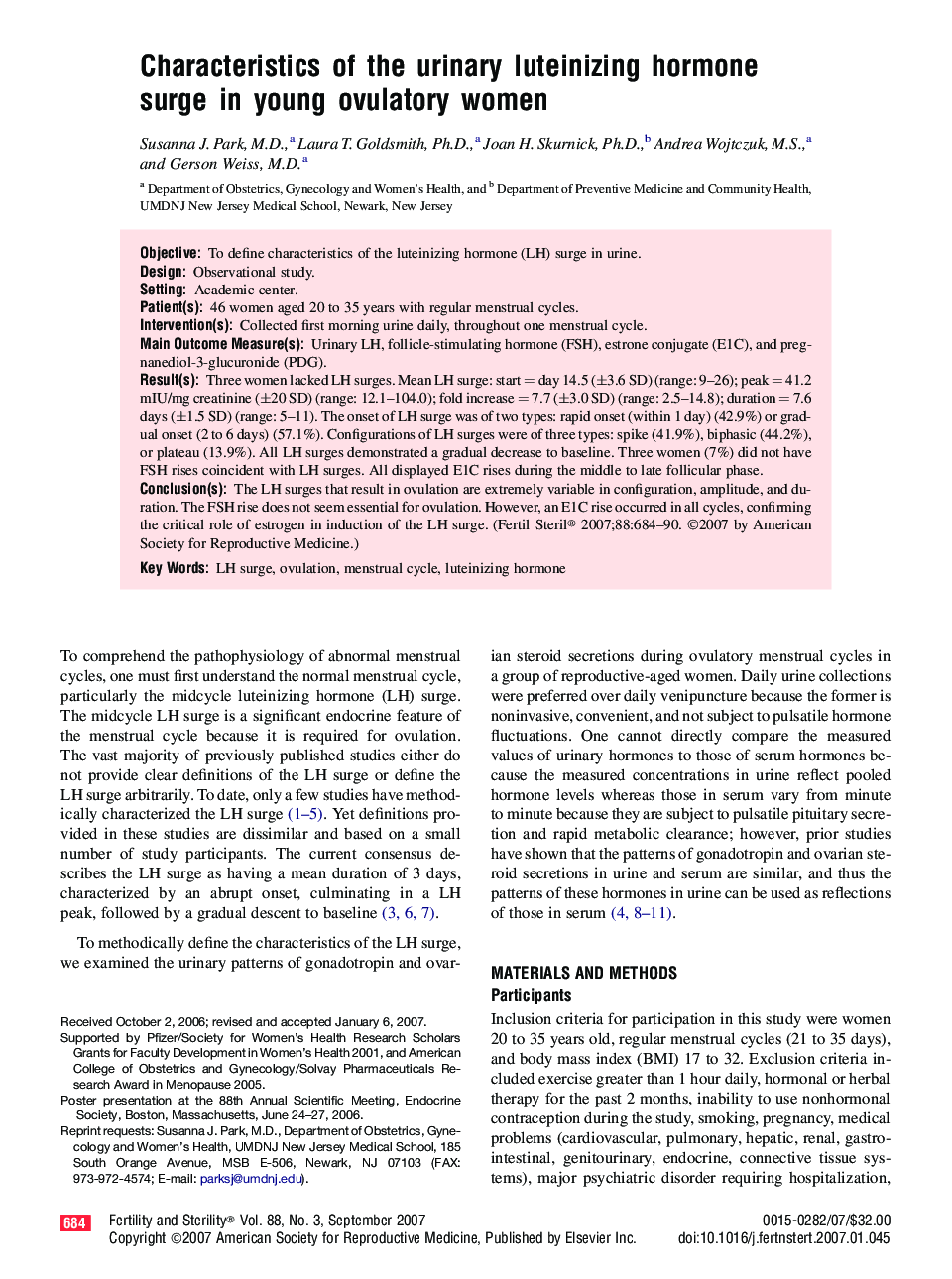| Article ID | Journal | Published Year | Pages | File Type |
|---|---|---|---|---|
| 3939735 | Fertility and Sterility | 2007 | 7 Pages |
ObjectiveTo define characteristics of the luteinizing hormone (LH) surge in urine.DesignObservational study.SettingAcademic center.Patient(s)46 women aged 20 to 35 years with regular menstrual cycles.Intervention(s)Collected first morning urine daily, throughout one menstrual cycle.Main Outcome Measure(s)Urinary LH, follicle-stimulating hormone (FSH), estrone conjugate (E1C), and pregnanediol-3-glucuronide (PDG).Result(s)Three women lacked LH surges. Mean LH surge: start = day 14.5 (±3.6 SD) (range: 9–26); peak = 41.2 mIU/mg creatinine (±20 SD) (range: 12.1–104.0); fold increase = 7.7 (±3.0 SD) (range: 2.5–14.8); duration = 7.6 days (±1.5 SD) (range: 5–11). The onset of LH surge was of two types: rapid onset (within 1 day) (42.9%) or gradual onset (2 to 6 days) (57.1%). Configurations of LH surges were of three types: spike (41.9%), biphasic (44.2%), or plateau (13.9%). All LH surges demonstrated a gradual decrease to baseline. Three women (7%) did not have FSH rises coincident with LH surges. All displayed E1C rises during the middle to late follicular phase.Conclusion(s)The LH surges that result in ovulation are extremely variable in configuration, amplitude, and duration. The FSH rise does not seem essential for ovulation. However, an E1C rise occurred in all cycles, confirming the critical role of estrogen in induction of the LH surge.
